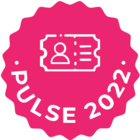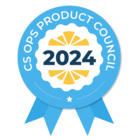Unless you’ve been living under a rock for the past year, you’ve heard countless CEOs share their insights on how emerging AI functionalities are going to transform our lives. You may have even seen Gainsight’s own Nick Mehta transformed into an AI Bot at Pulse 2023!
Needless to say, Gainsight is doing some amazing things with AI. Predictive analytics, health scoring, automated workflows, customer segmentation, personalized recommendations and using natural language processing technology for deeper insights are just a few of the innovative ways Customer Success teams can leverage Giansight’s AI solutions.
A common thread woven within each of Gainsight’s AI-powered solutions is the analysis of data, including support tickets, to summarize, predict, and make CSMs’ day-to-day lives a bit easier. Specifically, let’s dig into how Gainsight’s AI can help teams transform support ticket data into a crystal ball to predict future trends. 🔮
Scorecard Optimizer
Consider support ticket data when building out customer scorecards using the simple recipe below:
While this formula is a sound method for analyzing the way in which support trends impact customer health, how can you know if this is an effective prediction for your own organization? Use Gainsight’s AI-powered Scorecard Optimizer to offer optimal configuration recommendations and improve the effectiveness of existing scorecards.
To ensure Scorecard Optimizer is looking at support cases when making recommendations:
- Navigate to Administration > Scorecard and click the Optimizer Data option
- Select Customer Data and navigate to the Support section. This section displays the total records in the Case object and the time frame of these records. Note: if no data is available, click Add Data, which will take you to the Support Connectors page to easily load support data in CS using an OOTB connector (Zendesk, ServiceNow, Jira, Freshdesk). Alternatively, use the Rules Engine Load to Cases action type to load support data.
Next, run the Scorecard Optimizer to gather insights to the effectiveness of the support case measures in your scorecard and enjoy some AI-recommended improvements based upon YOUR data to narrow the scorecard focus and improve the overall usability of this predictive measure.
The following AI-powered use cases for support data in CS (Text Analytics and Customer Cheatsheet) require that the support case data exists in Gainsight’s Timeline. See the options below for populating Timeline with support case data.
- Option #1: Use Rules Engine and Load to Activities action type to update the Timeline with support case data. This action type would allow you to create a custom milestone, such as “support ticket closed,” and log the activity in Timeline when the milestone occurred. It is not recommended to include every support ticket in Timeline, however, as that could lead to a noisy and difficult to digest Timeline feed as well as a cluttered customer journey widget.
- Option #2: To avoid a cluttered customer journey, you can alternatively create an External Action with an API call and then use Rules Engine and the Call to External API action type. While this method requires more manual configuration than Option #1, it would allow you to apply more discriminatory criteria about what information to post to Timeline. (For example, use filtering criteria such as “high priority,” “at-risk,” “# of days ticket is open,” etc.) Additionally, there is no need to log support activities as customer milestones with this option.
Text Analytics
Monitor sentiment in support cases using Gainsight’s Text Analytics. This feature scans survey feedback as well as timeline feeds from various categories to provide advanced analytics, including sentiment assessment, enhance customer experience, predict trends, identify potential churn, and recommend necessary steps to increase product usability.
Note: In order for support case text to be considered in Text Analytics, the text must exist in Timeline or Surveys.
- Load support ticket data to Timeline using one of the recommended options above
- And/or use the Rules Engine and Load to Survey action type to load NPS or CSAT survey results from your support system to the corresponding Gainsight Survey object.
- Configure Text Analytics by selecting Timeline and/or Surveys for Source Type data
- Add out of the box Topics and Keywords to get better text analytics results based on support requirements (i.e., ticket, issue, bug, request, blocker, resolve)
View sentiment trends over time and use Text Analytics Widgets for even deeper insights:
- Companies: View aggregated sentiment score, NPS, CSAT, and revenue by company
- Impact Analyzer: uncover how different drivers like scorecard measures or customer sentiment impact business goals like NPS and renewals
- Takeaways: Analyze and extract meaningful textual key points and manually added topics from various customer interactions from the Timeline support case data
- People: View the list of Company Persons along with their Role, Email, Company Name, historical Sentiment score, and their latest survey response
Customer Cheatsheet
The Customer Cheatsheet widget on the C360 uses AI to create a narrative summary based on key customer metrics, strategic priorities, risks, product requests, renewals, executive changes and much more using the last six months of their Timeline entries. Meaningful insights on sentiment, product feedback, customer goals, growth opportunities, and potential risks are often embedded in conversations between key customer contacts and support agents. These insights need not remain siloed in support tickets any longer. Allow AI to sift through the noise, pull out meaningful nuggets, and summarize the data with a succinct narrative to save time and direct attention to what’s most important.
Note: In order for support case data to be included in Customer Cheatsheet, the support data must exist in Timeline.
- Load support ticket data to Timeline using one of the recommended options above
- Next, configure C360 by dragging the Customer Cheatsheet widget into the Summary canvas and Voila! No other configuration necessary. AI will scan through Timeline entries and provide a robust narrative summary of your customer.
As you can see, Gainsight's AI-powered solutions aren't just transforming Customer Success—they're practically giving it a crystal ball. From refining scorecards to reading between the lines of support tickets, these tools turn data into gold. With AI, it's not just about predicting the future; it's about making it brighter, one support ticket at a time. 😎







